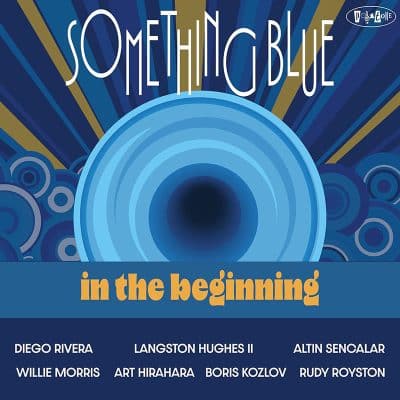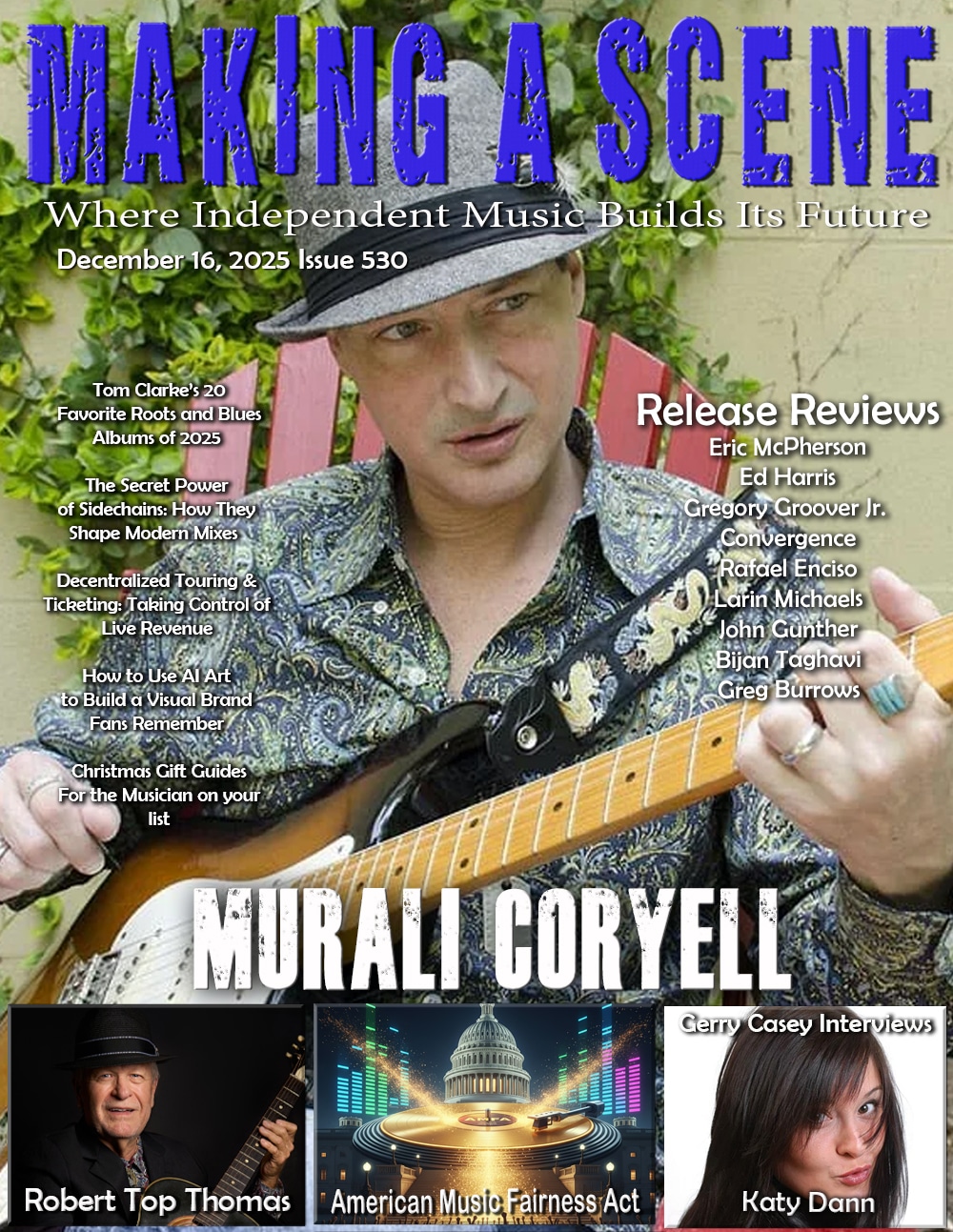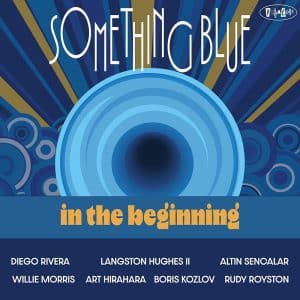Something Blue In the Beginning
 Something Blue
Something Blue
In the Beginning
Posi-Tone
Something Blue is a rotating cast of musicians on the Posi-Tone label. We’ve covered many Posi-Tone albums on these pages, but never explained how the successful independent label began until now. Like so many, this was a DIY effort by label head and producer Marc Free, then a working musician who converted a space behind his mother’s home in Venice, CA, into a makeshift studio. He built an underground label that recorded local musicians with whom he typically collaborated. Ten years later, he met recording engineer Nick O’Toole, cementing a partnership that still endures today, 200 albums later. They settled on the musical principle and business sensitivity of “positive, tone, and experience.” They quickly moved the label to NYC, Brooklyn, to be precise. Free and O’Toole have one of the most efficient processes, doing most of their recording in two well-planned periods each year. Musicians I’ve spoken to love Free’s professionalism. These musicians come prepared or else! O’Toole later does the mixing at his home in Lake Oswego, OR. Call it coast-to-coast magic.
Earlier this year, we covered Swingtet, the first to celebrate this thirtieth anniversary. This is the second, and there are more in store. Posi-Tone is perhaps today’s premier label for straight-ahead jazz, marrying the ‘old school’ with the contemporary, as younger artists have entered the fold recently. Some of them are present here. We’ve written extensively about Diego Rivera, Willie Morris, and Altin Sencalar, and the stalwart rhythm section of pianist Art Hirahara, bassist Boris Kozlov, and drummer Rudy Royston needs no further explanation. The new name here is altoist and versatile woodwind player Langston Hughes II, enrolled in a Master’s program in Jazz Studies at Juilliard. He made his mark in D.C. and has already toured with marquee jazz musicians. He has led his own quartet, playing mostly in major Mid-Atlantic states venues.
The album title suggests a return to the label’s origins, and indeed these nine compositions are from songs released on the label in the ‘90s – Edwing (Trapdoor), John Nau (Undercurrents), Phil Farris (Sun Sound), and Joe Gaeta (Art of the Workingman). Marc Free is doing this purposely to accentuate the timelessness of the music, now in the hands of completely different players, and to rejuvenate interest in the label’s back catalog. As with almost all issues on the label, it SWINGS. This is a sextet with a front line of Rivera (7 tracks) or Morris (2 tracks), Hughes II on alto, and Sencalar on trombone, with the rhythm section as denoted above.
Opener “Trapdoor” begins with a wonderful three-horn passage in blazing tempo before giving way to animated solos from Rivera, Hirahara, and Sencalar before restating the head and ending abruptly. Royston’s kit work, per usual, is masterful. Nau’s “Undercurrents” is a ballad, featuring the robust tone and deep feeling of Morris on tenor opening, yielding on the second turn to Hughes II, followed by Hirahara playing sprightly and lightly, punctuated by Royston’s cymbal flourishes, before Morris returns to put a cap on this gorgeous piece. Edwing’s “Dream for Donte” has an engaging melody with Spanish tinges. Rivera is most comfortable in this setting, delivering an evocative turn. Hughes II steps forward briefly before Sencalar takes flight, followed by the three horns trading snippets of the flowing melody, leading to a definitive climax.
Phil Farrris’ “Sun Sound” is one of the lengthier tracks at nearly nine minutes. Royston kicks up a fast-paced rhythm, over which Morris improvises in swinging, rather fierce fashion, joined by Hughes II and a heated engine room, with Hirahara going full tilt. These cats are cooking! Mercy! Yet more than anything, though, this is a showcase for Morris’s energetic, fiery tenor, the ensemble bringing it to a volcanic close. We catch our breath with Joe Gaeta’s mid-tempo ballad “This One’s for You,” a short piece, as Sencalar and Hirahara are featured. Edwing’s “Like Miles” may be patterned after Miles’ Second Great Quintet in the ‘60s, but these ears are drawn mostly to the trumpeter’s late ‘50s albums on Prestige. Edwing’s “Portrait of Harlem” is a blues, perfectly suited to this sextet, especially Rivera, Sencalar, and Hirahara. Yes, there are some Ellingtonian motifs here.
“Lockout” is from a different composer, Ehud Asherie. It sounds almost like a big band piece, but these players go into overdrive, Royston excelling on the eighths in several sections. Arguably, the most interesting and most contemporary-sounding piece closes, Farris’s eleven-and-a-half-minute partly reflective, partly dynamic “Sea of Sand,” offering opportunities for these great soloists, Hirahara, Rivera, Sencalar, and Hughes II, to stretch out.
Although the title suggests the beginning, this heated session represents the dynamic music of these Posi-Tone artists today.
- Jim Hynes
BUY NOW
Buy Us a Cup of Coffee!
Join the movement in supporting Making a Scene, the premier independent resource for both emerging musicians and the dedicated fans who champion them.
We showcase this vibrant community that celebrates the raw talent and creative spirit driving the music industry forward. From insightful articles and in-depth interviews to exclusive content and insider tips, Making a Scene empowers artists to thrive and fans to discover their next favorite sound.
Together, let’s amplify the voices of independent musicians and forge unforgettable connections through the power of music
Make a one-time donation
Make a monthly donation
Make a yearly donation
Buy us a cup of Coffee!
Or enter a custom amount
Your contribution is appreciated.
Your contribution is appreciated.
Your contribution is appreciated.
DonateDonate monthlyDonate yearlyYou can donate directly through Paypal!
Subscribe to Our Newsletter
Order the New Book From Making a Scene
Breaking Chains – Navigating the Decentralized Music Industry
Breaking Chains is a groundbreaking guide for independent musicians ready to take control of their careers in the rapidly evolving world of decentralized music. From blockchain-powered royalties to NFTs, DAOs, and smart contracts, this book breaks down complex Web3 concepts into practical strategies that help artists earn more, connect directly with fans, and retain creative freedom. With real-world examples, platform recommendations, and step-by-step guidance, it empowers musicians to bypass traditional gatekeepers and build sustainable careers on their own terms.
More than just a tech manual, Breaking Chains explores the bigger picture—how decentralization can rebuild the music industry’s middle class, strengthen local economies, and transform fans into stakeholders in an artist’s journey. Whether you’re an emerging musician, a veteran indie artist, or a curious fan of the next music revolution, this book is your roadmap to the future of fair, transparent, and community-driven music.
Get your Limited Edition Signed and Numbered (Only 50 copies Available) Free Shipping Included
Discover more from Making A Scene!
Subscribe to get the latest posts sent to your email.









